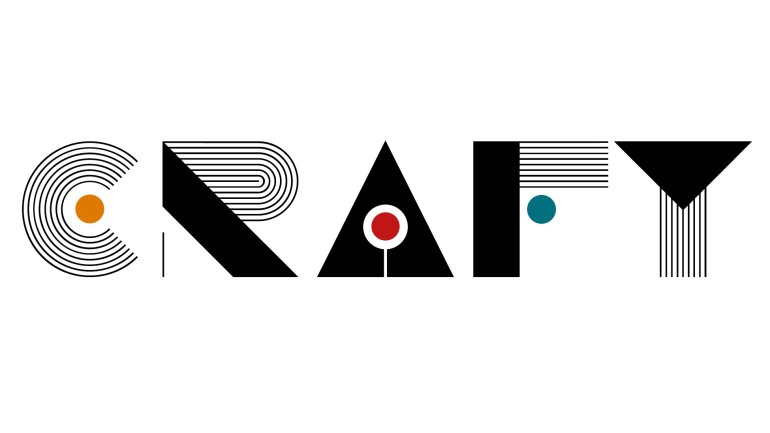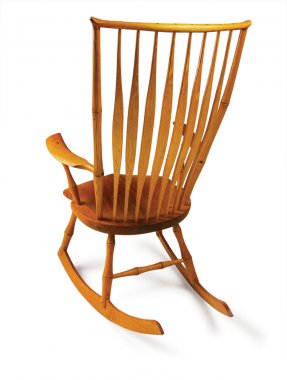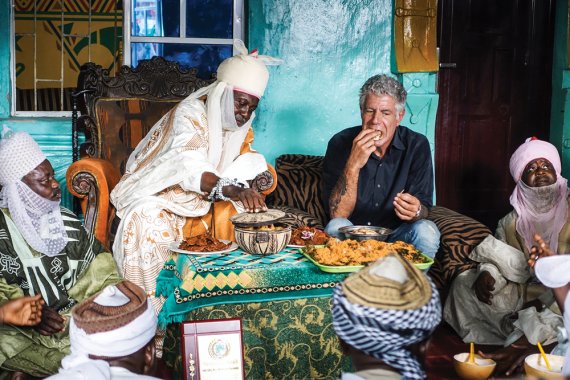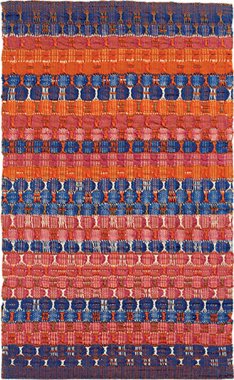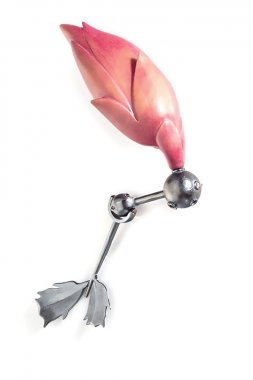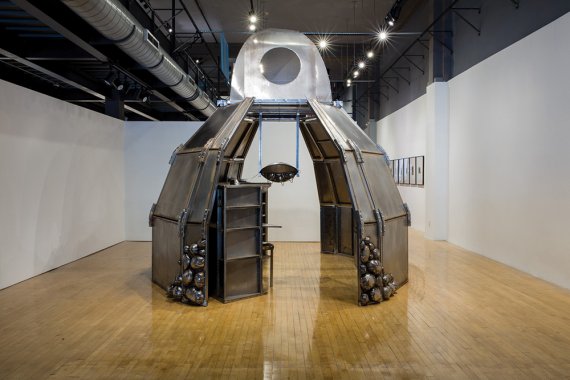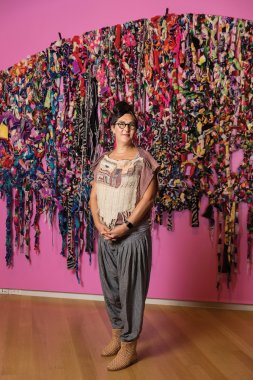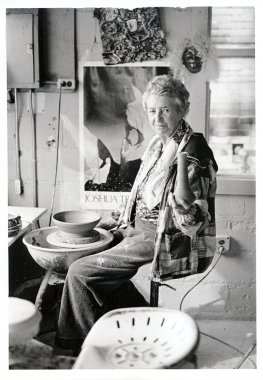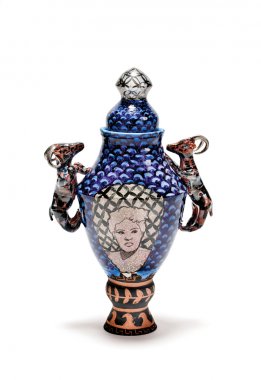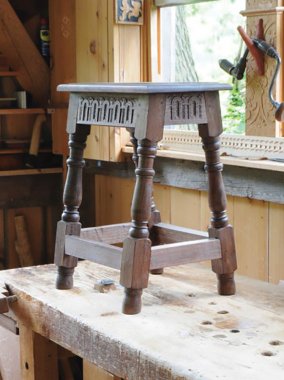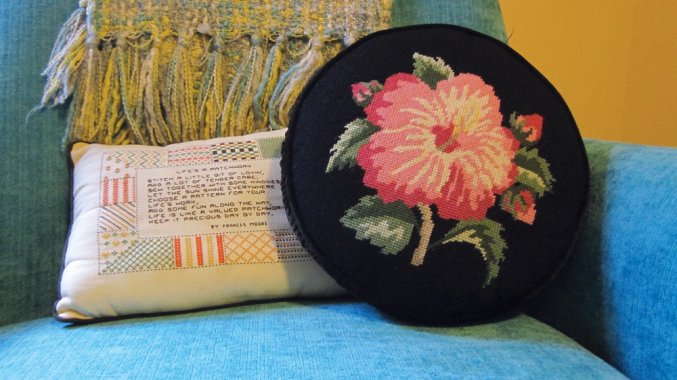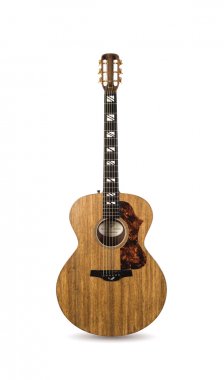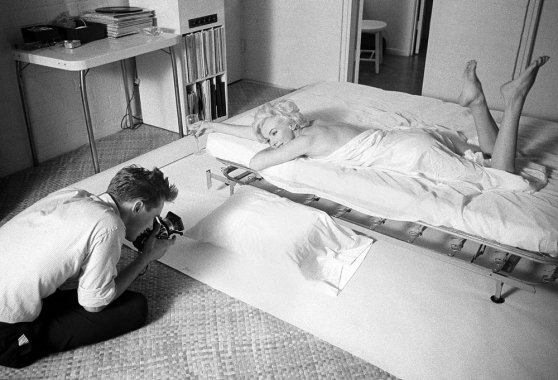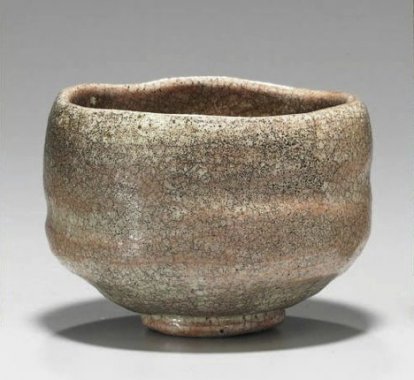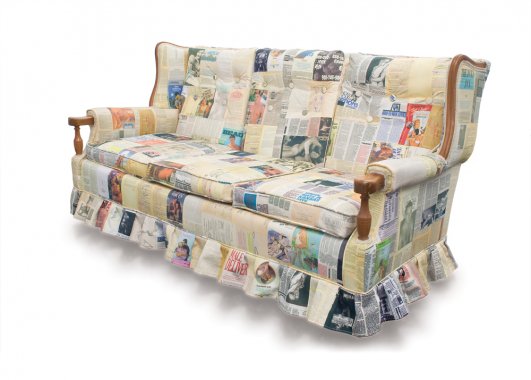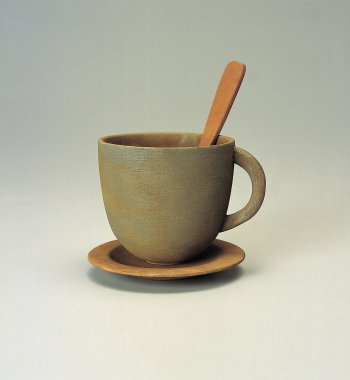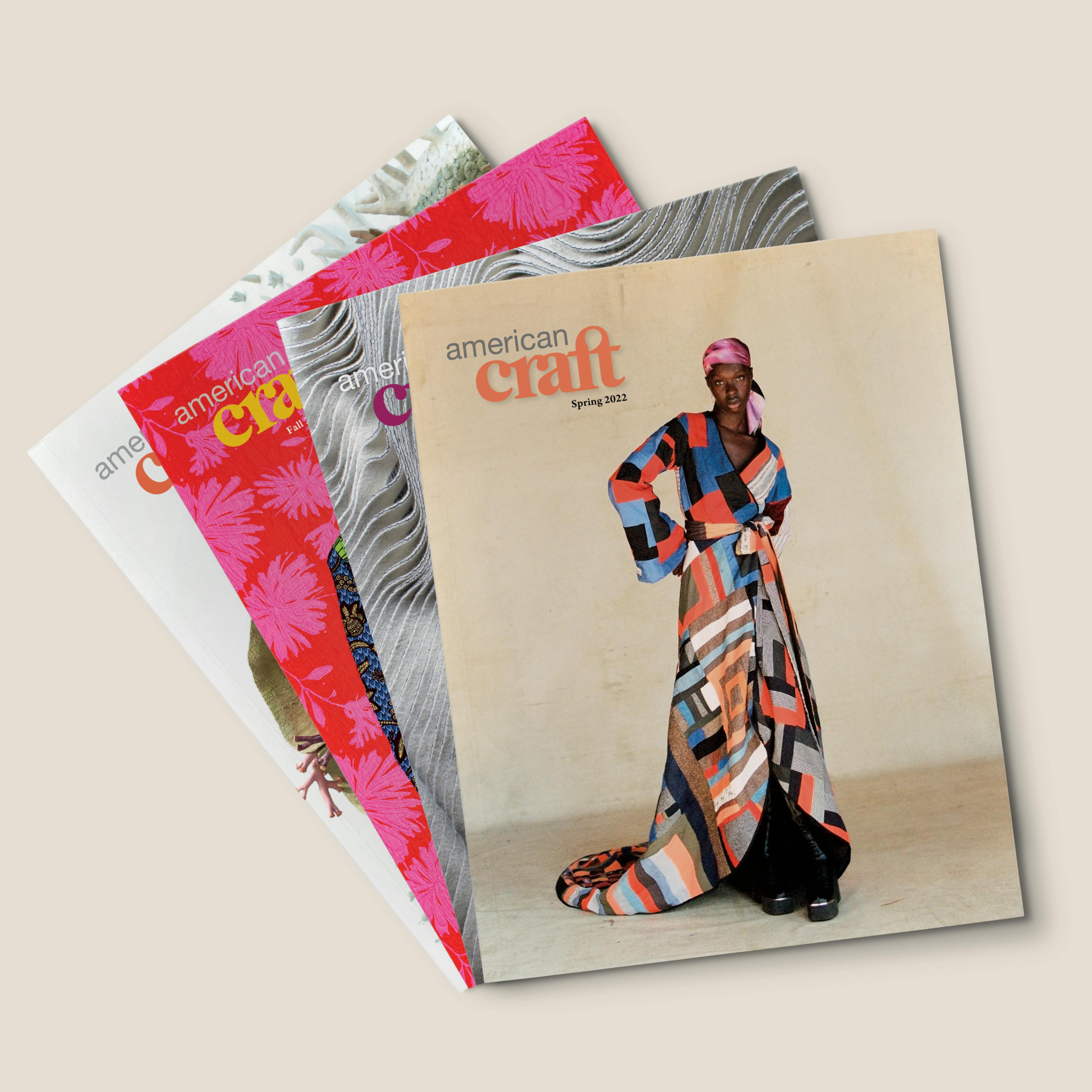Craft: Seriously, What Does the Word Mean?
Craft: Seriously, What Does the Word Mean?
Confession: When I tell people I write for American Craft – something I’ve done for 35 years now – I brace for what I know is coming. If they’re not really familiar with our magazine, the reaction is almost always the same: a pleasant look of recognition and genuine interest, tinged with vague puzzlement. “Oh, yes,” they say, “I think I know it.”
Typically, they’ve confused it with a how-to or traditional handicrafts publication – not that there’s anything wrong with either assumption. So I always feel obliged to explain our subject matter. But I’m never entirely comfortable or satisfied with my answer.
You’re holding this magazine, or looking at it online. How would you describe, to the average person, what it covers?
Well, it’s handmade work today, I say. Ceramics and glass, quilts and weavings and furniture and jewelry, all kinds of beautiful objects. High quality, things you’d see in galleries and museums and design shops. Expressive, like painting or sculpture. Or just great everyday items to live with and use. Oh, some of it is a little out there – offbeat materials, giant installations, conceptual – stuff you might not think of as craft at all. Plus some traditional work, maybe with a twist. And there’s a whole history and philosophy in the field; a lot of the work now is socially conscious.
In other words, I struggle, I ramble. Somehow a single, concise, all-purpose definition of "craft”" eludes me. In the end, I just proselytize. Our magazine celebrates a world of amazing creation and inspiration, I tell people, and you should really check it out. When they do, they’re blown away by the work they see.
Let’s face it, "craft" is a curious word. We think we know it, but do we? Richly evocative of tradition, history, and a standard of quality, the word can connote many things: skill, art form, antidote to the machine, hobby, therapy, counterculture, deception. In the past decade alone, with the rise of a new generation, we’ve seen the field expand to include DIY, craftivism, and maker culture. Some artists and art institutions avoid the word – that’s nothing new – but other voices and audiences have stepped up to embrace and claim it.
It feels like a good time to get a sense of what craft means now. So we’ve asked around, seeking brief answers to two questions: "What is craft?" and “What person, object, event, or work of art epitomizes your view of craft?” We sought perspectives from dozens of artists, thinkers, and leaders in our own field and others.
The responses were thoughtful, heartfelt, provocative, some times vexed. While no consensus emerged, a few themes did.
CRAFT IS UNIVERSAL
This is a big one: craft as a value that can apply to any endeavor, be it music, gardening, food, film, even lifestyle. Certainly it’s proved a marketable notion (craft beer, anyone?). Some might argue the trend jumped the shark once big consumer brands started advertising "signature crafted" fast-food burgers and "curated" salads. (Quilted Northern spoofed the aesthetic on April Fool’s Day by touting its fictitious "rustic weave artisanal" toilet paper.) Still, there’s magic in handling materials with thought and care, an ideal all of us can understand, appreciate, and pursue.
"Craft is the dovetailing of discipline and imagination, dedication and inspiration. When those spiral around each other, and serious attention is given over to that alchemy, then one’s craft can be realized. My particular craft uses notes and words, and sometimes they are difficult to wrangle into a pleasing shape, but no more difficult than thread and fabric, wood and knife, canvas and paint, flour and butter." ~ Rosanne Cash, singer, songwriter, author
"Craft is applied creativity. It’s the process of turning the spark of an idea into something tangible and beautiful using your own hands, skills, aesthetic, and vision. It could be a poem, a bowl, a pair of shoes, a plate of food, a sculpture, a building, a song. Marlee Grace embodies my view of craft today. Whether she’s writing, dancing, sewing, teaching, workshopping, or just living her life, it’s all a personal practice that’s very fluid and intentional." ~ Susannah Daly, founder and creative director, Renegade Craft fairs
"Craft, to me, is the skill developed, applied, and made manifest through practice and discipline in the fabrication of a work of art. Could be a chair, a lasagna, a painting, a symphony, or a monologue." ~ Nick Offerman, co-host, NBC’s Making It; woodworker
"Craft is the universal language of the hand, a language that needs no words. It is a language steeped in the power of personal creativity and expression. The late Anthony Bourdain’s CNN series about food, travel, and culture, Parts Unknown, fully fits my view of craft." ~ Ivan Barnett, artist; director, Patina Gallery, Santa Fe
"I believe the way a cook handles ingredients, especially vegetables – like working with clay or wood or metal or paper – is the craft of the thing. The visual and tactile possibilities of each leaf, globe, tuber, bunch, pod, sprout, seed, stalk, and sprig enhances the medium. Makes us look again. Appreciate. Salivate." ~ Dorothy Kalins, founding editor, Saveur and Metropolitan Home magazines
"The idea of craft as we fundamentally understand it – as an approach to production and a category of object – was invented in the 19th century by the British Arts and Crafts movement. It was a counter-industrial ideology meant to eliminate the harmful conditions of factory labor and elevate the spiritual well-being of the consumer. The craftsman was a skilled tradesman who was employed to build someone else’s designs for useful, beautiful objects, from start to finish, in healthful surroundings. The 20th-century studio craft movement layered new meanings onto craft to turn it into a counter-corporate ideology – a rebellion against the facelessness and conformity of white-collar work. The craftsperson was a self-employed individual who sought fulfillment from within by creating precious objects that could only come from one person’s rarefied skills and singular aesthetic vision. The craft object expanded beyond the traditional sphere of the decorative arts to encompass related work that could be conceptual or sculptural in intent, although still fabricated from traditional materials and techniques. In our 21st century, craft has taken on a new life as a counter-virtual ideology, a counterweight to the insipidness of lives spent looking at screens and tapping on keyboards. Once again, people are turning to the demanding work of bringing new things into the world with imagination and skill as a way to forge better lives. Only this time, the category of craft has expanded to indicate the presence of individual agency in the creation of anything, regardless of material or technique, from custom-made chairs to craft beers to software to 'hand-curated playlists' on Spotify." ~ Peter Korn, director, Center for Furniture Craftsmanship, Rockport, Maine; author, Why We Make Things and Why It Matters
"Craft is a broad and slippery word. It can refer to types of objects – 'contemporary craft' – especially those made of ceramics, fiber, glass, metal, or wood. These can be functional, sculptural, or conceptual. Craft can also refer to how someone practices a trade, whether an artisan, actor, playwright, or accountant. Someone once told me, 'If you give a darn about how something is made, then it’s craft!'" ~ Fabio Fernández, artist; past executive director, Society of Arts + Crafts, Boston
"I think it can best be summarized as a body of knowledge and hand skill that’s passed down from generation to generation. Who or what epitomizes it? It’s like food: It’s all around us, we need it, and there are infinite variations on it. And whether people are versed in its history and technique or not, they know what they like." ~ Sarah Archer, arts and culture writer, independent curator
"Craft to me is a particular skill combined with artistic integrity, created and developed into something that is appreciated by people. This can be applied to physical materials – wood, clay, stone – or aviation, music, visual art, etc. In music, guitarist Pat Metheny combines his compositional skills, soloing, and playing to achieve the epitome of what craft sounds like to my ears. Of course, any Frank Lloyd Wright structure or work of art by Picasso ultimately epitomizes craft." ~ Nathan East, musician, recording artist, longtime bassist for Eric Clapton
"In architecture, craft is the intelligent use of materials that unites beauty with function. Delivering that along with economy of cost is the holy grail for experienced architects. It’s understandable that architects often don’t master that challenge until late in their careers. As a young architect, I was in awe of what Louis Kahn did late in his career at the Salk Institute, where he raised the use of exposed concrete to the level of an art form. The quality of the concrete work there has often been emulated but rarely duplicated in the decades since it was built." ~ J. Peter Devereaux, chairman and CEO, Harley Ellis Devereaux
"I believe craft is anything you want it to be. It’s malleable, wild, and undefinable. Craft is fluid and queer. It wields the power to be all things at once, with no rules." ~ Faythe Levine, author and filmmaker, Handmade Nation; assistant curator, John Michael Kohler Arts Center, Sheboygan, Wisconsin
CRAFT IS A DISCIPLINE
This view emphasizes craft as an earned skill in the service of creativity, a way of doing things exceptionally well through study, practice, and dedication. It’s craft as a commitment, a form of expression, a way of life.
"Craft exists at the intersection of skill and creativity. Judith Schaechter embodies craft, in my opinion, because she creates art that is simultaneously incredibly original, skillfully made, and inspired by the material itself." ~ Jennifer Zwilling, curator of artistic programs, the Clay Studio, Philadelphia
"Craft is the mastery of material and technique. Epitome: Lino Tagliapietra. ~ Erik Demaine, origami artist, professor of computer science at MIT, Cambridge, Massachusetts; and Martin Demaine, mathematician, glassblower, MIT artist-in-residence.
"It’s impossible to define craft in a sentence or two. Sometimes in the US, people view craft as a laborer’s job, but in reality, craft is much more than that. In Europe, craft is an important and honored part of culture that is learned and dates back thousands of years. In Italian, the word for craftsman is artigiano, which means creating art with culture in mind." ~ Lino Tagliapietra, master glassblower, Murano, Italy, and Seattle
"I believe craft is the outcome of numerous small actions, carried out endlessly and sometimes repetitively. But after a while, something emerges which is substantial and has its own unique character, however commonplace the activity that produced it. As a producer of musical craft, I think above all of the composer J.S. Bach, working ceaselessly in humble contexts such as teaching, but somehow managing to produce wonderful art." ~ Judith Weir, CBE, Master of the Queen’s Music (official composer to Elizabeth II)
"What is craft? Broadly speaking, I follow the Richard Sennett line that craft is about someone doing a job well for its own sake. It’s important to stress that a sense of craft is present throughout all walks of life, from manufacturing industry to fine art, via technology and medicine." ~ Grant Gibson, immediate past editor, Crafts magazine, Crafts Council, UK
"Craft is a way of doing things involving deliberateness and attention to detail and representing the accumulation of skill over time. Craft invites a life in which the objects that surround us speak to us of what is important. For me, craft can be embodied in things as disparate as Cherokee baskets, a Sam Maloof chair, or – I hate to say it – an iPhone." ~ Miguel Gómez-Ibáñez, president, North Bennet Street School, Boston
"I view the notion of craft not as limited by materials, but as a process. I frequently use the term 'skilled making"' when discussing craft, which can encompass most materials. Craft to me is often an integral part of the process when making artwork. Craft, however, always exists as a physical artifact; it cannot subsist as concept alone." ~ Mia Hall, executive director, Penland School of Crafts, Penland, North Carolina
"Craft is a commitment to a lifelong conversation with material and process. While style and technique evolve over the course of a maker’s career, craft is that most fundamental desire to feel, articulate, and understand the complexity of your own work. The potter Byron Temple not only had an effortless and graceful touch with his material, but he also demonstrated that same level of finesse in his ability to contextualize, document, and market his own work. His beautifully designed catalogues showcased his work in such an elegant way and educated his customers on how simple, humble stoneware pots can be elevated to exquisite objects through the mastery of both making and contextualization." ~ Brian Giniewski, ceramist
"To me, craft is expressed by work that reads of the materials and process of its making and the purpose for which it was made – by hand or machine. Favorite makers: Wharton Esherick, Toshiko Takaezu, Lenore Tawney, Ed Rossbach, and Anni Albers." ~ Jack Lenor Larsen, weaver, textile designer, craft collector, and advocate
"We think of craft as the overlap of science, the technical aspects and boundaries of the medium; art, one’s personal touch and lens; and tradition, the time-tested vocabulary of movements and ideas that are shared generationally. At our distillery, [master blender] David Stewart relies on different makers and craftspeople to orchestrate the liquid as he imagines it. For example, our coopers dedicate their time to the casks for quality and flavor return, whereas our malters work to stimulate the best potential yield from the barley seed." ~ Jonathan Wingo, brand ambassador, The Balvenie scotch whisky, Dufftown, Scotland
"Craft is the intentional expression by hands of what is in the mind, melding respect for materials with mastery and purposeful use of technique. Three exquisite examples of craft: Soundsuits by Nick Cave, cloisonné jewelry by Aurélie Guillaume, and the Crochet Coral Reef, created and curated by Christine Wertheim and Margaret Wertheim of the Institute For Figuring." ~ Lisa Bayne, CEO, Artful Home, Madison, Wisconsin
"Craft is the quintessential conjoining of a strong point of view, appropriate materials, and a maker or makers. A great example is the work of David Pye, who approached craftsmanship and perception as a kind of spiritual personal growth commitment. Another example is the work of Tanya Aguiñiga, who uses craft as a form of political community building and communication." ~ Rosanne Somerson, president, Rhode Island School of Design; furniture maker
"1. No one thinks the word 'craft' is obsolete!! 2. Every artist has 'craft.' 3. Every artist’s so-called 'craft' is simply to *re-define skill.* 4. Now do you see? XO" ~ Jerry Saltz, senior art critic, New York magazine
"At its best, craft exhibits technical brilliance and innovative techniques and materials; most important, it relays an artist’s passion and ideas." ~ JoAnne Cooper, Mobilia Gallery
"Craft refers to works done where the imagination and the hand of the maker are evident. Often the value of a piece is in the workmanship of the artist rather than what it’s made of. Examples: Harvey Ellis of Stickley Furniture, Greene & Greene architects, Louis Comfort Tiffany, and Dan Dailey, a glass artist with imagination and humor." ~ Collector Marian Burke, who with her husband, Russell, endowed the new Burke Prize, awarded by the Museum of Arts and Design
"We like our art well-crafted. Dale Chihuly crafts blown glass elements in the service of creating works of art. Sandy Skoglund crafts installations that she photographs. The photographs are the works of art but the craftsmanship of the installations makes them possible. Another example: sculptor Tip Toland." ~ Dale and Doug Anderson, collectors; co-founders, Association of Israel’s Decorative Arts
"At a gathering a few years ago, I noticed that Stoney Lamar called himself a sculptor and a maker but never used the terms 'artist,' 'artisan,' or 'craftsman.' The distinction is not about the object. Rather it is a celebration of and commitment to the process." ~ Carissa Hussong, executive director, Metal Museum
"What epitomizes craft? Two works come to my mind almost immediately: Joy, a brooch by Sharon Church of meticulously carved wood and fabricated silver; and Wayne Higby's majestic wall mural Earthcloud, of hand-carved, glazed porcelain tiles, commissioned for Alfred University. Both combine technical skill and understanding of material with a unique creative vision. These, for me, fulfill the concept of craft." ~ Helen Drutt English, former gallerist, collector, scholar
CRAFT IS ACTION
Craft is a verb – an active, activist one, evolving and involving. Whether it’s an artist pursuing a personal vision or technical innovation, a community project to teach children the joy of handwork, a public performance or happening, or thousands knitting pink hats, craft is a moving vehicle.
"Craft grows from everyday human experience, which makes it inherently social and political. It elevates the role that technique, method, materials, and community play in artmaking. The art of handcrafting imprints a piece with power – the power to educate, to challenge, to captivate, to provoke." ~ Suzanne Isken, executive director, Craft and Folk Art Museum, Los Angeles
"I find it helpful to think about craft as a verb – an action, a community, something with agency – rather than simply a noun, an object. The upcoming 2018 Renwick Invitational (“Disrupting Craft,” November 9 – May 5, 2019) includes four artists – Tanya Aguiñiga, Stephanie Syjuco, Sharif Bey, and Dustin Farnsworth – who exemplify these ideas, working outside the conventional definitions of the craft world but using the conceptual toolkits of craft to create communities and dialogue, to be agents of social change. Using the potent combination of social practice and craft, they interrogate pressing contemporary issues of cultural identity and social injustice, and question established historical narratives." ~ Abraham Thomas, curator-in-charge, Renwick Gallery, Smithsonian American Art Museum, Washington, DC
"The pushing and pulling of materials and processes in order to test their physical limits and perceptual boundaries. A cultural and critical response to the entire history of making 'things.' A verb. Exemplars include Sonya Clark’s work Unraveled, in which she picked apart a Confederate flag, thread by thread. Also, Jeffrey Gibson’s ecstatic and absolutely gorgeous panels and objects that place at the forefront a Native critique of contemporary visual culture." ~ Stephanie Syjuco, artist; assistant professor in sculpture, University of California, Berkeley
"Craft is a verb, an action, meaning to make or to process. I do not believe in craft as a noun, a thing, as in 'I make craft.' My best example is Chris Wight, who used a computer, a water saw, and a special gift of jasper clay from Wedgwood to make a futuristic homage to the Portland Vase [an ancient Roman cameo glass vessel]. The meticulous planning and hand assembly to make these works is awe-inspiring. No, they do not just pop out of machines; they require superb crafting. Nothing in the word 'craft' suggests that it must be by hand, be absent of machinery, require virtuosity, or have medieval roots. And Wight’s vases are breathtakingly haptic and beautiful." ~ Garth Clark, ceramics critic and historian; editor-in-chief, CFile.org
"Craft is a verb rather than a noun. It is a particular, sustained approach to making. In my 20 years at the California College of the Arts, I’ve seen craft applied to digital and analog tools across disciplines. What’s common is a sustained relationship with materials and a focused, iterative process. We recently awarded an honorary doctorate to Lia Cook, who epitomizes craft today. Her work celebrates material and process while exploring memory and the power of imagery" ~ Stephen Beal, president, California College of the Arts
"The word 'craft' signifies refined thought and execution. As an active verb, craft is used to denote the mark of the hand, technique, and the making of work, and therefore represents a hyper-awareness of execution alongside form, medium, and concept." ~ Donna Davies, vice president, Urban Expositions Art Group, producer of SOFA Chicago
CRAFT IS HERITAGE
Skills and heirlooms are preserved and handed down over generations, within families. In the bigger picture, the drive to create is part of who we are, in our very DNA.
"Craft in the truest, most basic sense is about the human need to make and connect; to bring the root of tradition and the power of the human hand on material and form together; with exploration, and without limitation, to connect us all to the world we live in. I’m a textile artisan who specialized in reproduction 17th-century clothing and textiles, and I’ve also done conservation work on originals. Coming from that traditional background, I’m moved and intrigued to witness simultaneously both the evolution and common thread that remains at the heart of craft." ~ Denise Lebica, director, Fuller Craft Museum, Brockton, Massachusetts
"I believe the words 'craft' and 'craftsmanship' have important meaning in the 21st century. The instinct to make objects by hand is as old as civilization and is identified with every culture in the world. In the United States, it was challenged in the 19th century, survived and blossomed in the 20th, and persists today. [ACC founder] Aileen Osborn Webb’s work in cultivating the studio [craft] movement was very important. While many programs and activities occurred in different parts of the country, Mrs. Webb’s vision and patronage beginning in the 1930s were pivotal in nurturing a modest activity to become a significant area of the arts today." ~ Paul J. Smith, curator, author; director emeritus, American Craft Museum
"Craft for me is a connection to our body memory, an acknowledgment of labor and all of the inherent context of materials, and the active continuation of tradition while in conversation with it. The works of Roberto Lugo and Teresa Margolles are perfect examples of my personal interpretation of craft – a constant dialogue between personal histories and material, opening up contextual ways that functional objects can communicate current issues, and ways that the histories of marginalized communities can be integrated into American history." ~ Tanya Aguiñiga, artist and designer
"For me, craft defies binary traditions and subsequent categorizations of 'either/or.' It is an idea, practice, or approach that is inherently humanistic. We are makers – builders of skyscrapers, technological marvels, fast cars, and objects of communal significance. Craft is an extension of what it means to be human in this current time and place of history." ~ Elizabeth Kozlowski, editor, Surface Design Journal
"People everywhere are makers – no matter how good they are or [whether they’re] recognized. It is a human need. In 1995, a keynote talk I gave was published in American Craft as 'The Pleasure and Meaning of Making.' The essay has garnered nearly 2,000 hits from 64 countries on my academia.com site. These amazing numbers tell me that making is universally practiced, not just the province of a few 'masters.'" ~ Ellen Dissanayake, author, What Is Art For? and Homo Aestheticus: Where Art Comes From and Why
CRAFT IS ALL AROUND US
Outside the world of white walls, pedestals, and academia, craft is, of course, a huge industry. We love our hobbies – the knitting and sewing and woodworking, things our ancestors did out of necessity. It may not be the most rarefied view of craft, but for many, it’s where meaning and memory live.
"To me, craft is combining creativity and process, using what we can do with our hands to make something with which to connect to others, our environment, or ourselves. My maternal grandmother’s work won’t be in museums or galleries but exists in memories and in the many items she made to keep people warm, just like the work of millions before her, made from love and skill and care." ~ Betsy Greer, author, Craftivism: The Art of Craft and Activism
"For me, craft involves an awareness of a human having been responsible for an object’s creation, as if the maker’s presence never entirely leaves the object. This presence could come from an element such as visible stitching, or just in witnessing the thoughtfulness that was needed to bring the piece to life. The objects that most epitomize craft to me are quilts. There is so much time, stitching, and care involved in their creation. Particularly, I’m drawn to quilts that have been created from used textiles. Not only do these materials have so much inherent character, but they also stand as a challenge (both functionally and aesthetically) to what one might consider waste." ~ Kat Roberts, author, Crafting for Cat Ladies and other DIY handbooks
CRAFT IS COMPLICATED
Here’s where it gets prickly. The old art-versus-craft debate lives on, accompanied now by conversations about race, class, gender, and culture. People have questions: Does craft have an identity problem? Is openness to interpretation a weakness or a strength? Is craft, without exception, a noble pursuit? Why are we even talking about this?
"Craft is making something skillfully; it’s just that simple. But from that basic definition, infinite complexities arise." ~ Glenn Adamson, curator and historian; author, Thinking Through Craft
"Craft is art." ~ Carol Sauvion, creator, executive producer and director, Craft in America films; owner, Freehand Gallery, Los Angeles
"Plenty of cultural structures ensure that craft is utilitarian and defined by the history of techniques and materials. 'Fine art' prefers a hierarchy, ensuring its superiority; by that definition, craft is the lesser of the two. To me, craft is art that results from indistinguishable melding of process, materials, and concept." ~ Judith Schaechter, artist working in stained glass
"Craft is defined by a series of attributes. None are necessary, but the more you find in an object, the more craft it is. There is a center of craft, and a periphery. Both are valid. Craft can be handmade but does not have to be. Craft can be made of traditional craft materials, such as clay or wood, but does not have to be. Craft can be made using traditional craft techniques, such as weaving or glassblowing, but does not have to be. Craft can use a traditional craft context, such as the vessel or the garment, but does not have to. Craft can address the history of craft itself but does not have to. Function is not a defining attribute of craft." ~ Bruce Metcalf, studio jeweler; co-author, Makers: A History of American Studio Craft
"Ah, such a dangerous word. It can go from the high (collectable, applied/decorative arts, design-driven craft, etc.) to the low (the sidewalk ceramist) and everything in between. If it means different things to everyone, does it mean anything? That’s a question I wrestle with. I think a really modern definition includes the work of people like Joseph Luttwak of Blackbird Guitars. He started by building beautiful guitars by hand using advanced carbon fiber composite, and ended up (in his search for a better, more sustainable material) creating a new eco-material called Ekoa that promises to replace wood in many applications, protecting against overexploitation. Why do I include this within the world of craft? Because it’s about incredible workmanship joining not only with a mastery of material and its properties, but also creating a material that represents an innovation based on deep craft." ~ Regina Connell, founder, Handful of Salt
"Over the last few years I’ve used the word 'craft' to designate traditionally handmade objects that have a decorative or utilitarian purpose – so more like "handicraft." This includes simple decorative embroidery, knitting, weaving, ceramics, wood carving, some forms of glasswork, and a variety of paper arts, but the list goes on. However, in the last 20 to 30 years, I feel there’s been an enormous, consistent effort on behalf of many artists to elevate these mediums into the realm of true contemporary art. I find it increasingly problematic (and some artists are quite sensitive, others not) to label something as craft; instead we might say an artwork has been created with a 'traditional craft technique.' Sometimes it feels like a ludicrous battle of semantics." ~ Christopher Jobson, founder and editor in chief, Colossal visual culture blog
"'Craft' is a tricky word, often misused. Craft implies physical involvement and participation by the creator. My feeling is that when the word 'craft' is used to describe a work of art, it is –wrongly – frequently considered lowbrow. What’s an example of craft? The Sistine Chapel comes to mind." ~ Douglas Kirkland, photographer
"I’m always a little bit uncomfortable talking about craft. In graduate school 20 years ago, I was working with corn husks (a crafty material by Yale School of Art standards), and craft was identified as a pejorative. At that point I started looking at models in Western art history that could help validate my material choices, which were drawn from my Seneca cultural identity. I don’t see art and craft as separate. With that said, craft is a visual expression manifesting in skillfully realized utilitarian goods, discrete objects, and performative works. It’s fun to think that I can sleep with craft, wake up, and look at it, as well as taste, touch, and listen to it, because craft has the potential to engage all senses. As a maker, I appreciate that craft has a long history rooted in collaboration and cross-generational knowledge sharing that connects back to our ancestors but also anticipates future generations. Craft is innovative. Craft is also generous – a noun and a verb. A few artists who epitomize what I like about craft: Shan Goshorn, Rebecca Belmore, Jeffry Mitchell, and Dan Webb." ~ Marie Watt, artist
"I find that 'craft' is a term that illuminates and obfuscates in equal measure. In speaking of process, I prefer David Pye’s 'workmanship of risk' versus 'workmanship of certainty.' But to me, craft is a field of making that holds material, method, and meaning tightly together, no matter the finished work." ~ Perry A. Price, executive director, Houston Center for Contemporary Craft
"Craft is messy and cannot be contained; there is power in rough edges that cannot be neatly categorized. Which craft is the craft to discuss here? Baskets or Art Basel – or everything in between? Craft connects the everyday and the singular. Craft shifts with place and time; craft in the US brings the whole world and centuries of making into the conversation. Craft is persistent; it does not and will not go away. People carry craft knowledge with them; craft is an embodied way of passing on culture." ~ Namita Gupta Wiggers, educator; director and co-founder, Critical Craft Forum
"Is an iron manacle hand-forged in 1830 for slave bondage worth calling craft? What word describes Kabiye blacksmiths Kao Kossi and Ide Essozimna upcycling scrap metal from cars into ritual gongs? Scar tissue in everyday material culture illuminates the ways 'mastery' is a dubious ambition in craft – and in culture." ~ Ezra Shales, art history professor, Massachusetts College of Art and Design, Boston; author, The Shape of Craft
"America’s poet laureate Donald Hall said writers need two essential qualities: imagination to see something with fresh eyes and skill to communicate that wonder to the rest of us. That’s good, but he left something out: a moral compass. Craft is neutral; Leni Riefenstahl had craft but used it to make movies in support of Hitler. Craft married to moral purpose is a blessing to the world." ~ Roy Peter Clark, writing coach; author of more than 10 books on writing
"Craft has historically been modified by 'studio' – as in 'studio craft' – but these terms, over the last 30 years, have become uncoupled. And rightly so. Studio craft as a history has privileged white, middle-class, and largely male artists. It has favored certain programs and particular lineages, and sustained a genealogy of master craftsmen (emphasis on men). American studio craft has a deep and difficult history of cultural appropriation – sustaining its own forms with traditions that are borrowed, stolen, and appropriated from the poor, the indigenous, and from people of color whose own systems of production were destroyed or altered by colonization. Craft is a raft: Try to climb aboard, but it is slippery and flips over frequently. It is a good time to build the boat anew." ~ Jenni Sorkin, associate professor, history of art, UC Santa Barbara; author, Live Form: Women, Ceramics and Community
CRAFT IS PROFOUND
Just when unresolved questions threaten to tie us in knots, an uplifting, even spiritual message comes through. Above all, we’re touched by the love and concern for craft expressed by all of our respondents, many of whom regard it as essential, a means of salvation from the stress, distraction, and disconnection of modern life.
"Craft is the innate drive for humans to transform materials with the goal of bringing meaning, value, and/or joy to existing in this world. The architect Samuel Mockbee, of Rural Studio fame, exemplifies what it means to look at the needs of the world and to transform available resources and materials through thoughtful, human design-build processes. A Mockbee quote that guides me: 'Everyone, rich or poor, deserves a shelter for the soul.'" ~ Michael J. Strand, ceramist; professor and head of visual arts, North Dakota State University, Fargo
"Craft is designing, making, and building something that provides value to your life or someone else’s. Value can mean many things: happiness, usefulness, function, self-worth. Craft is an intrinsic expression of life and creation." ~ Natalie Chanin, “slow design” pioneer; founder and creative director, Alabama Chanin fashion and home goods company, Florence, Alabama
"Craft is like the air we breathe: ubiquitous, ever-present, and an absolute necessity. Its ubiquity can sometimes render it invisible. Society relies on craft but sometimes does not see it or its broad impact. That is, we often only notice it in its absence, when the air gets thin. We long for its oxygen to fill our lungs when society is starving for a deep connection to our humanity." ~ Sonya Clark, artist and professor
"Craft is about more than just making. It is a knowledge, a wisdom, and a power that we can use to improve our lives through a better understanding of the properties of materials. Craft, crafting, and craftsmanship is about a state of being and a way of knowing. Sometimes we talk, in a spiritual sense, about being 'awake' or 'mindful,' and I think it is entirely appropriate to extend this state of awareness to craft. I guess I’m going to sound almost evangelical here, but I do believe there is a virtuous, even spiritual, aspect to embracing craft in your life. Robin Wood has been a real inspiration. His bowl-turning is second to none and matched by the generosity he shows to others. Robin was instrumental in setting up the Heritage Crafts Association, the advocacy body for historic crafts in Britain." ~ Alexander Langlands, archaeologist, historian, BBC presenter; author, Cræft: An Inquiry Into the Origins and True Meaning of Traditional Crafts
"Craft demands care, risk-taking, duration, refinement, flexibility of process, and the conscious application of intelligence, and so stands as a crucial counterpoint to instant-answer, push-button living. Even if it is at times tacit, automatic, and technology-infused, craft holds out the promise of remaining apart from – and gaining perspective on – the machine, and therefore craft remains a deeply human endeavor. In comparing craft to a 'workmanship of risk' and the machine-made to a 'workmanship of certainty,' David Pye brilliantly articulated the deeply improvisational, organic nature of craft. He taught us what it means to strive." ~ Maggie Jackson, author, Distracted: Reclaiming Our Focus in a World of Lost Attention and a forthcoming book on craft
"Working with materials allows us to connect to ourselves in ways that are hard to achieve otherwise. It allows us to tap into the long tradition and lineage of makers who paved the way for us. It builds and reinforces the importance of community and the need for compassion and support. To view craft as only material mastery does not do it justice. It is a way of thinking and expressing through a material, in which both the object and process have tremendous potential and significance." ~ Kimberly Winkle, woodworker; director, School of Art, Craft & Design, Tennessee Technological University, Cookeville
"Craft hovers in the space between the maker’s embodiment of a process and material and the satisfaction that this engagement brings to the maker. An integration of the disciplined work of the hand with the development of new processes that underscore the link between skill and humanity’s eternal need to create, craft is as much about the future of making as it is about its history." ~ Jennifer-Navva Milliken, artistic director, Center for Art in Wood, Philadelphia
"Craft is a voyage, a caravan, an expedition. It has the ability to transform maker and object by way of a creative continuum that transcends technology, material, and knowledge. Key example: Ann Hamilton’s work." ~ Michael Radyk, textile artist; director of education, American Craft Council, Minneapolis
"Craft embodies commitment and community. It offers a better quality of life and a deeper connection to one another. Craft embraces the work of diverse cultures in a way that is authentic and inclusive. I find it empowering to remember that, while the arts are a relatively modern invention, craft has been with us all along." ~ Stephanie Moore, executive director, Center for Craft, Creativity & Design, Asheville, North Carolina
What does "craft" mean to you? Send us a note at [email protected], or share your thoughts on Facebook, Twitter, or Instagram with the hashtag #whatcraftmeans.
Discover More Inspiring Artists in Our Magazine
Become a member to get a subscription to American Craft magazine and experience the work of artists who are defining the craft movement today.
